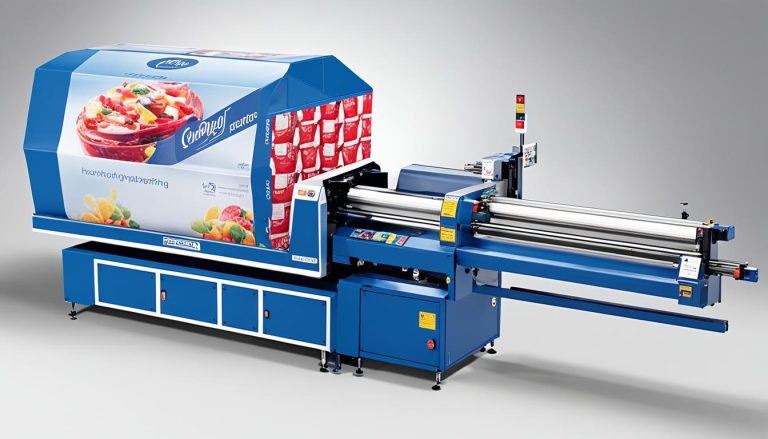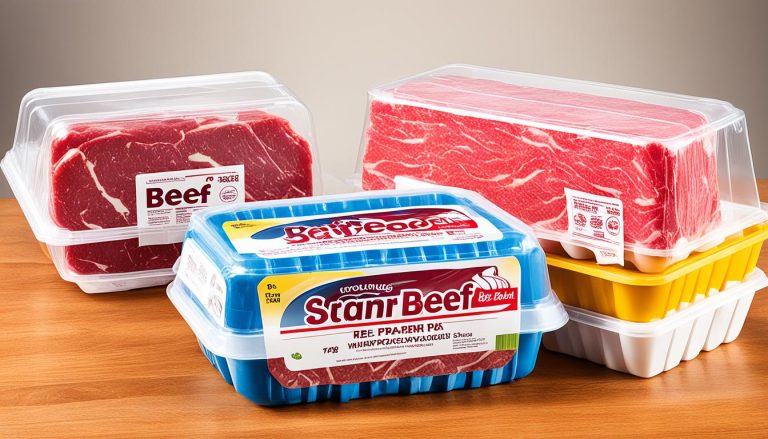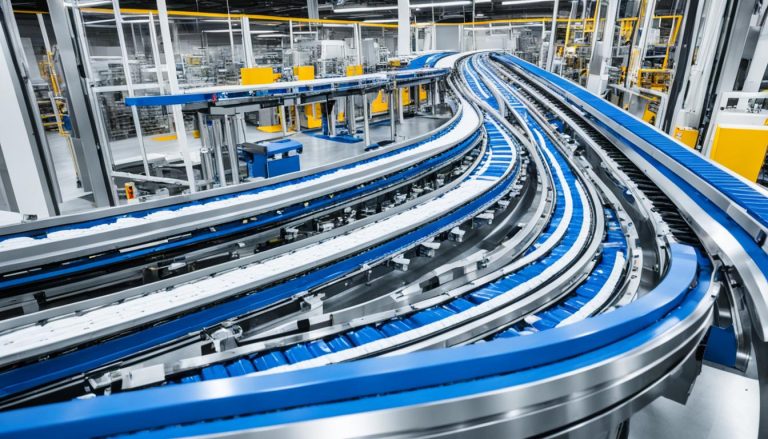![]() Email: [email protected]
Email: [email protected]
Search..
contact us
related articles
Maximize Productivity with Horizontal Automatic Packing Machines: A Comprehensiv
Table of Contents
In the realm of automated packaging solutions, horizontal automatic packing machines stand out as pivotal technology, boosting efficiency and versatility across various industries. These advanced packaging machineries have revolutionized the packaging sector by enabling a wide range of products to be securely wrapped in film via a horizontal motion process. The result is consistently protected, visually appealing packages.
The introduction of horizontal flow wrapping machines marked a significant shift in the packaging industry, providing a faster, more adaptable alternative to traditional methods. With Bostar’s long-standing expertise since 2002, the company has excelled in delivering high-quality automatic packaging solutions, serving sectors such as pharmaceuticals, daily chemicals, food, and cosmetics.
pppharmapack has continuously innovated its technologies, integrating advanced automation features that enhance speed, reduce labor costs, and ensure airtight seals, essential for food and pharmaceutical industries. Their products range from basic mechanical devices to sophisticated computer-controlled systems, epitomizing the evolution in materials science and digital imaging technologies.
With a superior technical team and professional engineering support, pppharmapack ensures robust after-sales services, providing comprehensive technical support swiftly and efficiently. The company’s commitment to innovation has seen the introduction of several new models of automated packaging machines over the past decade, each designed to meet the highest industry standards.
Key Takeaways
- Horizontal automatic packing machines maximize productivity through increased efficiency and versatility.
- These machines have revolutionized packaging with secure, consistent, and visually appealing results.
- pppharmapack has been a leading name in the industry since 2002, offering a wide range of automated packaging solutions.
- Significant advancements in sealing technologies ensure airtight packages, crucial for food and pharmaceutical sectors.
- Innovative automation technologies have enhanced speed, reduced labor costs, and improved safety in packaging operations.
Introduction to Horizontal Automatic Packing Machines
Horizontal automatic packing machines have revolutionized the packaging industry by offering unparalleled speed, flexibility, and efficiency. These machines are instrumental in packaging automation, enabling seamless packaging processes that cater to various industries such as food, pharmaceuticals, and consumer goods.
What They Are and Why They Matter
Horizontal packing technology represents a significant advancement in the field of packaging automation. These machines are not only capable of high-speed operations but also showcase versatility in handling a wide range of product shapes and sizes. Their cost-effectiveness in terms of both initial investment and operational expenses makes them an attractive solution for businesses aiming to optimize their packaging processes. The capability to produce sleek, visually appealing packages enhances product presentation, making a substantial impact on consumer decision-making.
Evolution in the Packaging Industry
The packaging industry has seen a remarkable transformation over the past few decades. Initially reliant on manual methods, the industry has progressively embraced advanced automated systems. Horizontal packing technology is at the forefront of this evolution, reflecting the shift towards more efficient and streamlined processes. These machines are extensively utilized for various applications, from packaging bakery products, snacks, and confectionery in the food sector to tablets, capsules, and medical devices in the pharmaceutical sector.
Additionally, household goods such as soaps, detergents, and cleaning products benefit from the adaptability of horizontal packing machines, accommodating various product sizes and shapes. Horizontal machines also contribute to longer product shelf life and reduced food waste, adding significant value across multiple industries.
How Horizontal Flow Wrap Machines Work
Horizontal flow wrap machines have revolutionized packaging by integrating advanced technology and mechanisms that deliver unparalleled packaging efficiency. These devices are engineered to automate the entire packaging process, enhancing both speed and precision. Understanding the inner workings of these machines reveals why they are indispensable in modern packaging lines.
The Technology and Mechanisms Involved
At the core of flow wrap technology is the horizontal form-fill-seal (HFFS) principle. Products are fed into the machine where they are enveloped by packaging films such as polyethylene or polypropylene. The machine’s mechanism involves forming the film material around the product, creating a continuous tube that is sealed using heat and pressure. This ensures strong, airtight packages that preserve product integrity.
Step-by-Step Process
- Products are conveyed into the forming area.
- Packaging film unrolls and envelops the product.
- The film is sealed longitudinally to create a tube.
- Cross-seals are made at regular intervals, creating individual packages.
- Finished packages are discharged for further processing or distribution.
Advantages of Flow Wrap Machines
The advantages of utilizing a horizontal flow wrap machine extend beyond just packaging efficiency. These machines offer:
- Rapid Packaging: Capable of packaging 40-150 bags per minute, maximizing throughput.
- Versatility: Adjustable settings for different product sizes and requirements.
- Reduced Labor Costs: Intelligent configuration increases production efficiency and minimizes manual intervention.
- Enhanced Product Freshness: Options for nitrogen filling and exhaustion brushes to maintain product integrity.
- Traceability and Compliance: Additional devices for printing expiration dates and lot numbers.
By combining flow wrap technology with horizontal form-fill-seal mechanisms, these machines offer a comprehensive solution that meets diverse packaging needs while optimizing operational efficiencies.
Flow Wrap vs. Overwrap: Understanding the Differences
In the realm of modern packaging strategies, both flow wrapping and overwrapping hold significant importance. They cater to various industries like food and beverage, medical, pharmaceuticals, and more. Understanding their distinct characteristics can help businesses make smarter packaging decisions.
Technical Distinctions and Applications
Flow wrapping and overwrapping differ markedly in their technical features and applications. Flow wrapping is renowned for its versatility, capable of accommodating products of varying shapes and sizes due to its broad size tolerance. This method provides airtight seals that keep out air and moisture, thereby extending the shelf life of the packaged items. Flow wrapping benefits many sectors by offering a rapid packaging process that can produce 50-150 packages per minute, with hyper-speed machines achieving up to 1500 packages per minute.
Overwrapping, on the other hand, is used extensively for primary packaging, multi-pack unit bundling, or as an extra protective layer for products already packaged. It delivers a visually appealing, tamper-proof package, often required for high-end food, beverage, healthcare, and personal care products. Additionally, overwrapping offers excellent compound control by keeping out contaminants and containing strong odors. However, it typically uses about 20% more film than flow wrapping, leading to higher material costs.
Comparative Benefits and Use Cases
The flow wrapping benefits are significant for businesses aiming for cost-effective and high-speed packaging solutions. It minimizes air and moisture intrusion, thus preserving product quality for longer periods. This method is also economical in terms of packaging material usage, making it an environmentally friendly option, as biodegradable films can be used. The labor operation for flow wrapping is simpler, reducing both labor and shipping costs.
Conversely, overwrapping applications are ideal for products where presentation and tamper-proofing are crucial. The method creates a gift-wrapped appearance, aligning well with consumer expectations for premium packaging. Overwrapping’s tamper-evident nature enhances security, critical for sensitive items in the healthcare and personal care sectors. Though it uses more film and is costlier, its ability to encapsulate areas nearly hermetically prevents odor leakage and cross-contamination, making it indispensable for products requiring stringent hygiene.
Both flow wrap and overwrap methods are valuable in reducing labor operations and packaging materials, ultimately lowering costs. Econo-Pak, with over three decades of experience and over 200 machines, exemplifies the expertise required to leverage these packaging strategies effectively.
Leading Manufacturers of Flow Wrappers
The packaging industry is continually evolving, with innovative machinery and solutions driving growth and efficiency. As a result, several packaging industry leaders have emerged, offering state-of-the-art flow wrapping systems that cater to various market demands. These manufacturers are known for their contributions to the industry and their ongoing commitment to machinery innovations

Their Innovations and Solutions
Flow wrapping systems offered by these manufacturers showcase remarkable machinery innovations. For example, BW Flexible Systems provides horizontal flow wrappers (HFFS) under renowned brands such as Hayssen, Rose Forgrove, and Schib. These machines cater to diverse industries including food, personal care, household products, frozen goods, pet food, medical, and pharmaceutical products.
The functionality of horizontal flow wrappers includes infeed, spacing, wrapping, sealing, and discharging in a smooth, continuous motion. This ensures high speed and efficiency, making these systems ideal for high-volume manufacturers. Moreover, BW Flexible Systems offers customized flow wrappers suitable for different product types like produce, snacks, bakery goods, cheese, personal care, and even industrial & automotive goods.
Notably, BW Flexible Systems also stands out by providing lifetime support and service from the initial design phase to installation. Their and other manufacturers’ flow wrapping machines are designed to enhance product efficiency, accuracy, and shelf life, meeting the needs of both growing and established businesses.
In conclusion, these packaging industry leaders have significantly contributed to machinery innovations, creating advanced flow wrapping systems that drive productivity and meet diverse industry requirements. Their commitment to excellence ensures that they remain at the forefront of the packaging industry.
Materials Used in Flow Wrapping Machines
Understanding the materials used in flow wrapping machines is essential for optimizing packaging efficiency and sustainability. The choice of materials can influence both the performance and the environmental impact of the packaging process. Key factors such as product protection, branding, and environmental considerations play vital roles in material selection. Different materials like polypropylene, polyethylene, and laminates provide a range of properties suitable for various packaging needs.
Exploring Types of Plastics and Packaging Materials
Flow wrapping machines commonly use several types of plastic film options. Each material offers distinct packaging material properties, making them suitable for specific applications:
- Polypropylene (PP): Known for its strength and clarity, PP is widely used in the food and pharmaceutical industries. It offers excellent barrier properties and structural integrity.
- Polyethylene (PE): This material is prized for its flexibility and is often used for packaging items like fresh produce and bread. PE’s adaptability makes it a popular choice for dynamic packaging requirements.
- Composite Films: These films consist of multiple layers of different materials. Composite films provide enhanced robustness, wear and tear resistance, and impermeability, making them ideal for products requiring extended shelf life.
- Mono Films: Composed of multiple layers of the same material, mono films often include a 5% hybrid additive to boost package durability. They are suitable for high-speed packaging operations due to their uniformity.
- Paper-based Wrappers: These wrappers integrate a plastic base with a paper coating, such as waxed paper, offering a more sustainable packaging option without compromising on functionality.
Considerations in Material Selection
Choosing the right sustainable packaging materials involves a careful evaluation of various factors:
- Product Protection: The material must safeguard the product against physical damage, moisture, and contaminants.
- Branding Needs: The packaging should enhance the visual appeal of the product and align with the brand’s image.
- Environmental Impact: Increasingly, businesses are turning towards eco-friendly materials to minimize their carbon footprint. Sustainable packaging materials are becoming a priority in many industries.
- Cost Efficiency: While some materials might be costlier, such as cold sealing films which are generally 5% to 10% more expensive than heat sealing films, they may offer specific advantages that justify the investment.
- Material Waste: Flow wrapping machines are designed to reduce material waste, efficiently utilizing plastic film options and lowering overall material consumption.
The table below highlights the material properties and suitable applications for each type:
| Material Type | Properties | Applications |
|---|---|---|
| Polypropylene (PP) | Strength, clarity, barrier properties | Food, pharmaceuticals |
| Polyethylene (PE) | Flexibility | Fresh produce, bread |
| Composite Films | Robustness, impermeability | Consumer goods, industrial items |
| Mono Films | Uniformity, durability | High-speed packaging |
| Paper-based Wrappers | Sustainability, aesthetics | Bakery items, eco-friendly packaging |
In summary, selecting the appropriate materials for flow wrapping machines requires balancing product protection, branding needs, environmental impact, cost efficiency, and waste reduction. These considerations ensure the chosen sustainable packaging materials meet the diverse requirements of modern packaging processes.
Understanding ‘Flow Wrapped’ Packaging
In today’s rapidly evolving packaging industry, ‘flow-wrapped’ packaging is a standout method known for its efficiency and adaptability. This packaging technique is defined by creating a fin or overlap seal, resulting in a secure and form-fitting pillow pouch. By ensuring effective protection, the flow-wrapped packaging process has become indispensable in a myriad of sectors.

The Process and Final Package Characteristics
The flow-wrapped packaging process begins with feeding products into the flow wrapper. These items are then enveloped in a continuous film that forms a tube around them. Subsequently, cutting and sealing operations are performed to individualize packages. This streamlined sequence makes the process highly efficient and adaptable to various product sizes. The final package typically showcases a neat, secure seal, ensuring that the product is well-protected and visually appealing to the consumer.
Specific industries benefit significantly from these machines, including the food and beverage industry where products such as candy bars, cookies, and frozen foods are commonly packaged. Other sectors such as pharmaceuticals, cosmetics, and industrial goods manufacturers also rely on this method due to its versatility and efficiency.
Industry Significance
Renowned for setting industry packaging standards, the flow-wrapped packaging process plays a pivotal role across diverse sectors. Companies in the detergent and soap, health, pharmaceutical, chemical, and food and beverage industries utilize these machines for their speed and accuracy. For instance, food items like biscuits, pizza, and lollipops, as well as non-food items like stationery, household goods, frozen products, medicines, and cosmetics, are frequently flow-wrapped to meet industry standards.
Notably, the type of sealing—whether cold or hot—depends on factors such as material costs, production speed, and seal strength requirements. Cold sealing, being faster than heat sealing, has grown in popularity due to its non-reliance on heat generation. Flow-wrapping machines also offer printing capabilities, which further streamline the packaging process by including essential details like date and batch numbers directly on the packages.
In a detailed comparison, large flow-wrapping machines cater to high-volume needs, whereas smaller machines offer cost-effective solutions and lower power consumption. This versatility means that businesses, regardless of their size or production demands, can find suitable machinery that meets their specific needs, like the SleekWrapper range, known for its high-speed performance and adaptability.
Benefits of Horizontal Automatic Packing Machines
Horizontal automatic packing machines offer numerous advantages, significantly impacting production efficiency, cost reduction, and safety in packaging operations. These machines have become a staple in various industries due to their ability to enhance productivity and ensure safer working environments.
Increased Speed and Accuracy
One of the most compelling benefits is their ability to increase packaging speed and accuracy. Horizontal packing machines can achieve high production speeds, with some models capable of packaging up to 200 bags per minute. This level of efficiency is unmatched by many other types of packaging equipment, enabling businesses to meet stringent production deadlines. Additionally, the accuracy of these machines ensures consistent packaging, which is crucial for maintaining brand integrity and customer satisfaction.
Reduced Labor Costs
Automation in horizontal packing machines significantly reduces the need for manual labor, leading to substantial cost reduction. By minimizing human intervention, these machines not only increase production efficiency but also lower the risk of human error, further ensuring consistent packaging quality. This reduction in labor costs allows businesses to allocate their resources more effectively, optimizing overall operations.
Improved Safety
Safety in packaging operations is paramount, and horizontal automatic packing machines excel in this area. These machines are equipped with advanced safety features that mitigate the risk of workplace accidents and injuries. The automated nature of these machines means that workers are less exposed to hazardous conditions, promoting a safer work environment and enhancing operational safety measures.
Enhanced Productivity and Efficiency
The integration of horizontal packing machines into production lines leads to enhanced productivity and efficiency. These machines can handle a wide range of products, from solid items to liquids and granular substances, making them versatile and invaluable across various industries. Furthermore, modern horizontal packing machines can seamlessly integrate with other production equipment, reducing downtime and increasing total production efficiency.
Consistent and Customizable Packaging
The ability to deliver consistent and customizable packaging is another significant advantage. Horizontal packing machines ensure each product is packaged to the same high standard, which is essential for consumer confidence. Moreover, these machines can be customized to meet the specific needs of different businesses, offering flexibility in packaging designs and materials.
Reduced Waste
Waste reduction is a critical concern for many businesses, and horizontal automatic packing machines effectively address this issue. By streamlining the packaging process and reducing material wastage, these machines contribute to sustainability and cost savings. The precision and efficiency of these machines result in fewer packaging materials being used, leading to lower production costs and a smaller environmental footprint.
| Benefit | Key Advantages |
|---|---|
| Increased Speed and Accuracy | Up to 200 bags per minute, precise operations |
| Reduced Labor Costs | Automation minimizes manual labor, reducing costs |
| Improved Safety | Advanced safety features enhance workplace safety |
| Enhanced Productivity and Efficiency | Integrates with production equipment, handles various products |
| Consistent and Customizable Packaging | Ensures consistent quality, offers customization |
| Reduced Waste | Efficient processes lower material wastage |
Factors to Consider When Choosing Horizontal Automatic Packing Machines
When selecting packing machines, several critical factors come into play that significantly influence the decision-making process. It involves understanding your production volume, budget, and the essential features that will best meet your needs. Let’s break down these considerations in detail.
Production Volume and Specifications
The production volume is a key determinant in choosing the right packing machine. Machines are typically evaluated based on the number of pouches they can fill and seal per minute. The volume of the product being packaged per unit and the type of packaging layer required (primary, secondary, or tertiary) must align with the machine’s capabilities. For example, horizontal fill, vertical fill, and mini sachet pouch machines each cater to different packaging needs. Understanding the appropriate size and shape for your product is essential, ensuring the machine’s dimensions are compatible.
Budget Constraints
Budgeting for automation is a significant factor influencing your purchase decision. It’s essential to consider not just the upfront cost but also the long-term operational expenses such as energy efficiency, minimal maintenance, and the availability of spare parts to reduce downtime. Custom machine features may increase the initial cost but can lead to substantial savings in labor and maintenance. For example, a highly automated system that includes options like gas charging capability or an integrated gusset device can justify its cost by enhancing packaging efficiency and reducing waste.
Essential Features
Identifying the essential features required for your packaging machine is crucial. This involves looking at adjustable filling capacities, quality sealing, user-friendly interfaces, and integrated labeling capabilities. Features should align with your current needs while offering flexibility for future adaptations. Whether you need a machine that can handle different types of packaging materials such as plastic bags or cardboard, or one that includes automatic system operations with minimal labor requirements, these considerations will significantly impact your choice. Custom machine features tailored to specific industry needs can increase operational efficiency and lower overall costs.
Considering these factors thoroughly will aid in selecting packing machines that not only meet your production requirements but also ensure cost-effective, high-quality packaging solutions.
Conclusion
Investing in horizontal automatic packing machines is a strategic decision for businesses looking to optimize packing processes. These machines stand as a testament to modern advancements, designed to enhance production efficiency and meet high industry standards. With the growing need for streamlined packaging solutions, horizontal packaging machines offer a flexible approach, capable of handling a variety of products, including solids, liquids, and dry goods.
Horizontal automatic packing machines significantly contribute to faster and more cost-effective production processes. Covering all stages automatically, they ensure product hygiene by eliminating hand contact with food and pharmaceutical items, protecting them from damage, dust, and moisture. These machines are equipped with sophisticated safety features, stopping immediately upon detecting any abnormal conditions, thus safeguarding both the operator and the product. Additionally, their design improves inventory management by efficiently stacking similar products together, reducing separation and counting time.
In making strategic packaging decisions, it’s essential to acknowledge the versatility and efficiency offered by these machines. Horizontal automatic packing machines provide consistent packaging solutions, suitable for various industries, from food processing to pharmaceuticals. They not only enhance product visibility and branding with more surface area for graphics and messages but also contribute to sustainability by reducing packaging waste. Despite some limitations, such as the need for mechanical adjustments and operator oversight, the advantages they offer make them a worthwhile investment in automation.
FAQ
What are horizontal automatic packing machines?
Horizontal automatic packing machines are advanced packaging machinery that use a horizontal motion process to wrap a wide range of products in film. These machines enhance efficiency, versatility, and productivity in automated packaging operations.
How have horizontal packing machines evolved within the packaging industry?
The packaging industry has transitioned from manual packaging methods to highly efficient and automated systems. Horizontal packing technology offers seamless and efficient packaging processes that are critical in modern automated packaging solutions.
What technology and mechanisms are involved in horizontal flow wrap machines?
Horizontal flow wrap machines leverage intricate engineering, where products are conveyed to a forming area, enveloped in film such as polyethylene, sealed using heat and pressure, then discharged as finished packages. This technology provides exceptional packaging efficiency.
What are the advantages of using flow wrap machines?
Flow wrap machines offer rapid packaging speeds, ease of changeover, precision in packaging, and versatility in handling various products. They are an ideal choice for achieving high levels of packaging efficiency with consistently high-quality results.
How does flow wrapping differ from overwrapping in packaging?
Flow wrapping creates a tight, sealed package using plastics like PP or PE, providing form-fitting protection. Overwrapping, on the other hand, gives a gift-wrapped appearance suitable for boxed items. Both methods have distinct benefits based on product preservation and aesthetic needs.
Who are the leading manufacturers of flow wrappers?
Prominent manufacturers like Campbell Wrapper Corporation, Cavanna North America, Omori North America, Reepack, and Crawford Packaging lead the industry with advanced flow wrapping systems, continuously innovating to meet diverse industry needs.
What materials are commonly used in flow wrapping machines?
Materials such as polypropylene (for strength and clarity), polyethylene (for flexibility), and specialized laminates (for specific barrier properties) are commonly used in flow wrapping. The selection of materials is driven by factors including product protection, branding needs, and sustainability considerations.
What is ‘flow wrapped’ packaging?
‘Flow wrapped’ packaging is characterized by its fin or overlap seal and pillow pouch appearance. It provides secure, form-fitting wrapping for products, ensures an efficient packaging sequence, and is adaptable to different product sizes, making it a staple in the packaging industry.
What are the benefits of horizontal automatic packing machines?
Horizontal automatic packing machines improve productivity through increased speed and accuracy in packaging, reduced labor costs, enhanced safety, increased efficiency, consistent and customizable packaging options, and reduced waste, supporting cost-savings and sustainability efforts.
What factors should be considered when selecting horizontal automatic packing machines?
When choosing a horizontal automatic packing machine, consider production volume and specifications, budget constraints, and essential features such as adjustable filling capacities, quality sealing, and user-friendly interfaces to ensure the machine aligns with your production requirements.

Professionally To Supply Automatic Packing Machine And Automatic Packing Line, In Order To Reduce Labor Costs.
Information
Product
contact us
- Tel:+86-13864892065
- Email: [email protected]
- Whatsapp: +86-13864892065
- Office: No. 106, Jingkou Road, Licang District, Qingdao, Shandong, China.
- Factory: No.2157, Fuquan Road, Liquan Industry Park, Gaomi, Shandong, China.




